Posted by Elena del Valle on February 12, 2010
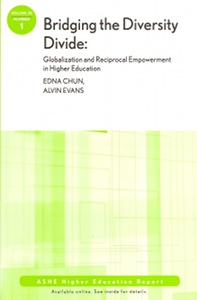
Bridging the Diversity Divide
University administrators, educators and anyone wishing to better understand diversity have a new resource available in Bridging the Diversity Divide Globalization and Reciprocal Empowerment in Higher Education (Joseey-Bass, $29) by Edna Chun and Alvin Evans. The 144-page softcover research based book was designed as a practical guide for those wishing to develop inclusive campuses. The authors believe systematic organizational change is essential in order to achieve true inclusively universities.
Published in 2009, the book is divided into five main sections: The Changing Landscape and the Compelling Need for Diversity; Translating Principles into Practice; Mapping the Terrain for Inclusion and Bridging the Gaps; Orchestrating the Process of Cultural Change; and A Toolkit for Operational Reciprocal Empowerment. There is also an executive summary, recommendations and two appendices.
The authors recommend organizations that want to embrace inclusive principles adopt a change model based on organizational learning ideas; formally outline, in cooperation with employees and relevant groups, the diversity ideas they wish to add; allocate resources to the inclusive project accordingly; measure results; highlight success case studies; be alert to disparate treatment of minorities and monitor retention; and establish a work environment where stereotypes are dispelled.
Chun, vice president, Human Resources at Broward College in Fort Lauderdale, Florida, has more than 20 years of human resources experience in public research universities in California, Oregon and Ohio. Evans is associate vice president, Human Resources and Kent State University. He has more than 20 years of experience in public sector human resources management and organizational development.
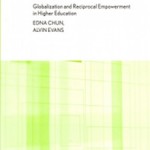
Click here to buy Bridging the Diversity Divide
Comments:
Filed Under: Books
Posted by Elena del Valle on February 10, 2010
By Carlos M. Rivera-Cuesta, APR
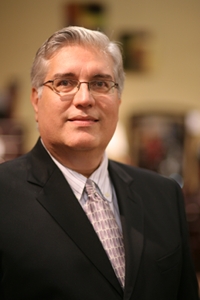
Carlos M. Rivera-Cuesta, APR, executive partner, Partners Communications
Photo: Carlos M. Rivera-Cuesta
This multiple-part question might be asked many times when the subject surfaces regarding how to advance as a public relations professional: “What one step can I take to increase my knowledge and understanding, enhance my career and boost my earning potential?” A growing number of public relations professionals are considering the Accredited in Public Relations (APR) as a way to accelerate their immediate career and promote lifelong advancement. What is the true value behind these three letters? What does the designation mean to public relations practitioners?
Those who earn Accreditation are set apart as individuals and also part of an exclusive group of around 5,000 practitioners worldwide. They also, at least statistically, can earn more than non-Accredited colleagues.
Click here to read the complete article.
Hispanic Marketing and Public Relations Understanding and Targeting America’s Largest Minority book
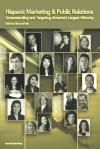
“A must resource for practitioners/professionals expecting to reach US Hispanics; also valuable for college programs in marketing, public relations and communications. Highly recommended.”
Choice magazine
Click here for information on the Hispanic Marketing & Public Relations book
Posted by Elena del Valle on February 8, 2010
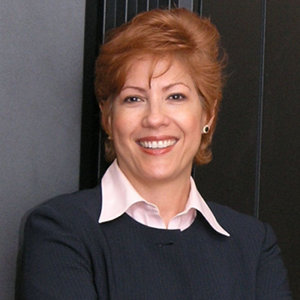
Maria Azua, vice president, IBM Enterprise Initiatives
Photo: IBM
A podcast interview with Maria Azua, vice president of Cloud Computing Enablement, IBM Enterprise Initiatives, is available in the Podcast Section of Hispanic Marketing & Public Relations, HispanicMPR.com. During the podcast, Maria discusses Latino culture in social networks and cloud computing with Elena del Valle, host of the HispanicMPR.com podcast.
Maria has deep technical skills and extensive experience in software development, managing new innovation projects, start-ups, acquisitions, solution delivery and process excellence. She is responsible for the technical implementation, deployment and operations of the Common Cloud Platform Living Lab share service, as well as the IBM Smart Business Development and Test on the IBM Cloud. She is also responsible for the creation of a community of independent software vendors, business partners, and technical community that fosters cloud computing IT methodologies and applications.
Maria is also the author of The Social Factor Innovate, Ignite, and Win Through Mass Collaboration and Social Networking (2009 IBM Press, Pearson Education), a book about social networking based on Maria’s leadership in social networking tools at IBM (see IBM Executive discusses social media business benefits).
Prior to her current role, Maria was vice president of Technology and Innovation, reporting to the IBM chief information officer. In that role, she focused on the development of innovative IT solutions and the integration of new technologies. She created and managed the Technology Adoption Program (TAP) innovation program, where more than 120,000 IBM employees participate to create innovations in a development community. Her responsibilities in the CIO office also included the creation of the first IBM Green Data Center.
Maria was inducted into the Women In Technology International (WITI) Hall of Fame, and was named one of the “100 Most Influential Hispanics” by People magazine in 2006. She has 50 patents and 39 patents pending that span a wide spectrum of technologies. In 2006, the Society of Hispanic Professional Engineers (SHPE) recognized Maria with The Star Award for her contributions and dedication to the Hispanic community.
To listen to the interview, scroll down until you see “Podcast” on the right hand side, then select “HMPR Maria Azua,” click on the play button below or download the MP3 file to your iPod or MP3 player to listen on the go, in your car or at home. To download it, click on the arrow of the recording you wish to copy and save it to disk. The podcast will remain listed in the February 2010 section of the podcast archive.

Click here to buy The Social Factor
Posted by Elena del Valle on February 5, 2010

The Wolfman stars Anthony Hopkins and Benicio Del Toro
Photos, video: Universal
I know, I know another wolfman movie. How many wolfman movies can they make? And yet, this one, The Wolfman, due out February 12, has been on my list of maybes since I first caught a trailer a couple of months ago. If nothing else the cast intrigued me. Two award winners, Anthony Hopkins and Benicio Del Toro, star in the movie as well as Emily Blunt (who recently played young Victoria, the British monarch) and Hugo Weaving (seen in Lord of the Rings and The Matrix). Scroll down to watch trailers.
In the film, according to promotional materials (no screener was provided by the studio) Lawrence Talbot (Del Toro), a nobleman, returns to his family estate to search for his missing brother at the behest of his brother’s fiancee (Blunt). After reuniting with his estranged father (Anthony Hopkins) he finds out “something” has been killing local villagers and drawn Frederick George Aberline (Weaving), a suspicious Scotland Yard inspector to investigate.

Of course, nothing is as simple as it seems. In his search for his brother and a way to protect the villagers from danger he is attacked. Later he makes a startling discovery about himself. Any guess what that might be?
Released by Universal Pictures the film was directed by Joe Johnston (Raiders of the Lost Ark) and produced by Scott Stuber, Benicio Del Toro, Rick Yorn, and Sean Daniel. Other noteworthy contributors include six-time Academy Award-winning creature effects designer Rick Baker (Del Toro was fitted with a prosthetic chin, cragged dentures with sharp canines, a real hair wig and a beard that was applied with bits of follicles glued to his face; the wolf suit was made with yak hair, crepe wool and leg extensions); a bass baritone opera singer for the perfect wolf howl; and triple Oscar-winning costume designer Milena Canonero.
Comments:
Filed Under: Video
Posted by Elena del Valle on February 4, 2010
Information provided by our Event Partner

Search Engine Strategies London Conference & Expo 15-19 February 2010
Just because you know a thing or two about search marketing doesn’t mean you can relax – especially in this market. This is why we’ve assembled a team of experts each with decades of experience to head up a number of tracks focusing on advanced marketing techniques. Learn More
Join Avinash Kaushik, Jim Sterne and others on 15 – 19 February as we break down analytics heading into 2010, laying out the measurability of social media, explore advanced paid search methodology and more at this year’s SES London 2010.
View the complete programme at http://www.searchenginestrategies.com/london/agenda.php
Enter UK15MPR to save 15% off the registration fee.
Posted by Elena del Valle on February 4, 2010
Information provided by our Event Partner

Billboard Latin Music Conference & Awards – April 26-29, 2010
Conrad San Juan Condado Plaza, Puerto Rico
Live from Puerto Rico!
Billboard Latin Music Conference & Awards – April 26-29 * Conrad San Juan Condado Plaza, Puerto Rico
Special Offer for HMPR!
Pay only $499 for the Billboard Latin Music Conference & Awards (a $200 savings!)
Just use promo code: HMPR when registering.
The Billboard Latin Music Awards, presented by State Farm, the most important Latin music industry event in the world will unite today’s top Latin music artists, executives, managers, sponsors, media and many more.
Visit the website for the most up to date information.
www.BillboardLatinConference.com
Posted by Elena del Valle on February 3, 2010
By Josh Norek

Josh Norek, deputy director, Voto Latino
Photo: Josh Norek
My wife – a first generation Salvadoran-American attorney who grew up in some of the roughest areas of Los Angeles – once described part of my nearby hometown of Albany, NY as “the scariest place I’ve ever been.” When a girl from East LA thinks Albany is the most dangerous city in America, you know upstate New York has a problem.
Make no mistake: upstate New York is a microcosm of America’s Rust Belt and agricultural communities. As manufacturing and farming declined upstate, so did the area cities’ populations and their corresponding tax bases: in the Capital District region, Albany’s population dropped by 29%, Schenectady’s by 32% and Amsterdam’s by a staggering 43% between 1950 and 2000. Had Latino immigrants not moved to these small cities in the past two decades, the population losses would have been far higher.
Click here to read the complete article.
Hispanic Marketing and Public Relations Understanding and Targeting America’s Largest Minority book

“A must resource for practitioners/professionals expecting to reach US Hispanics; also valuable for college programs in marketing, public relations and communications. Highly recommended.”
Choice magazine
Click here for information on the Hispanic Marketing & Public Relations book
Posted by Elena del Valle on February 1, 2010

Many young women wear comfortable shoes to work and change into stylish shoes on arrival
Many moons ago, I won’t say how many, someone I held in high regard said to me that a lady could always be identified in two ways, by her hair style and the shoes on her feet. Yesterday’s lady is today’s working woman. Whatever the driver is many women who work today have a fondness or fascination for shoes. For career minded women shoes, 64 percent according to a recent Mintel survey, are the preferred accessory to complete an ensemble.
Respondents to the survey on women’s attitudes towards work attire indicated they favor shoes and dress boots over other types of accessories. After footwear jewelry was the second most popular embellishment while purses, belts and scarves were the least likely additions; 52 percent of working women said they finish their looks with necklaces, earrings and bracelets. Only one third of women said they rely on purses, belts and scarves.
As women age they are less likely to change from comfortable into stylish shoes once they are at work. About 44 percent of women surveyed aged between 35 and 44 said they change into more stylish footwear on arrival at work while only less than a third of women 35 and up said they do that.
“Shoes and boots have come into the fashion forefront as women look for ways to make their outfits stand out,” said Kay Fay, senior analyst at Mintel, in a press release. “Demanding shoe styles, especially those with sky high heels, aren’t ideal for walking long distances. But many young women don’t care; they’re perfectly content to cart in a second pair of shoes so they can commute in comfort yet look stylish in the office.”
Most women who participated in the survey, 82 percent, said they dress for themselves; and only 34 percent said they dress to be fashionable. Among respondents, young women were the most concerned with trends; 46 percent of young women, aged 18 to 34, like to follow trends. While only 33 percent of women overall said they like to try new styles, 47 percent of women aged 18 to 24 responded that they like new designs. No information on preferences by ethnic or racial group was available from the survey.
The survey was conducted online in August 2009 among a sample of 503 women parents aged 18 and older who had access to the internet and who worked outside the home. Mintel is an international supplier of consumer, product and media intelligence.
“Happy for No Reason” audio recording

Presenter Marci Shimoff, author, Happy for No Reason
What: An audio presentation by Marci Shimoff and Q&A with Marci Shimoff and HispanicMPR.com audio program host Elena del Valle about finding happiness.
Available exclusively on HispanicMPR.com!
Click here to listen to a short interview with Marci
Click here for more information on “Happy for No Reason” audio recording with Marci Shimoff
Posted by Elena del Valle on January 29, 2010

Winning Job Interviews book cover
Photos: Career Press, Paul Powers, Ph.D.
In Winning Job Interviews (Career Press, $12,99), a 218-page softcover book, Paul Powers, Ph.D. offers readers strategies and techniques to help them get the job interview they want. He discusses how readers can overcome difficult obstacles, be prepared to answer interview questions, increase the quantity and quality of job offers, avoid social networking mistakes, secure their jobs and be ready in case of trouble.
The book, published this year, is divided into nine chapters: Why Job Hunting Sucks; How To Get More and Better Interviews; You Are in Control; Building Your Winning Interview Plan; How To Have Glowing Job References; How To Close the Deal and Get the Job Offer; Turning the Offer Into a Job You Love; Glitches, Potholes, Calamities and Idiots; and The Winning Job Interview Toolkit.

Paul Powers, Ph.D., author, Winning Job Interviews
Powers, a licensed psychologist and former chair of the Massachusetts Board of Psychologists, is a graduate of the University of Massachusetts at Amherst. He is a speaker and executive coach dedicated to helping other achieve a more rewarding career, a more productive organization and a more balanced, satisfying life.” He divides his time between Massachusetts and Florida.

Click here to buy Winning Job Interviews
Comments:
Filed Under: Books

























